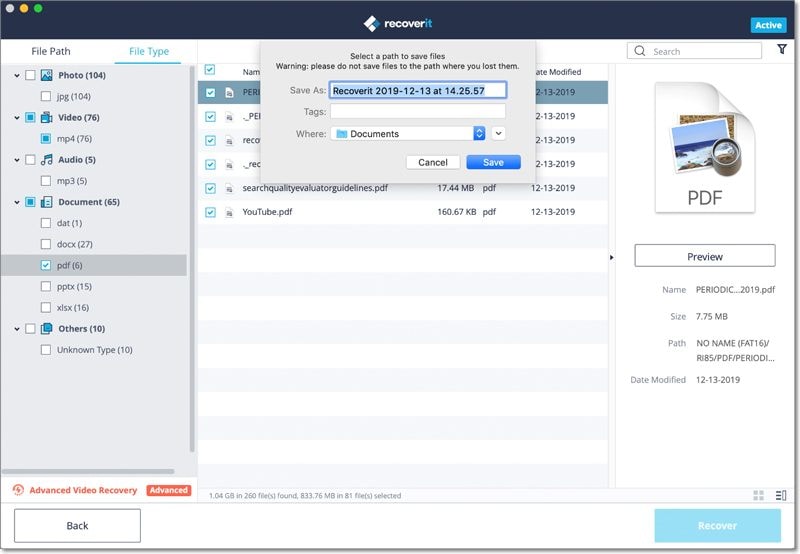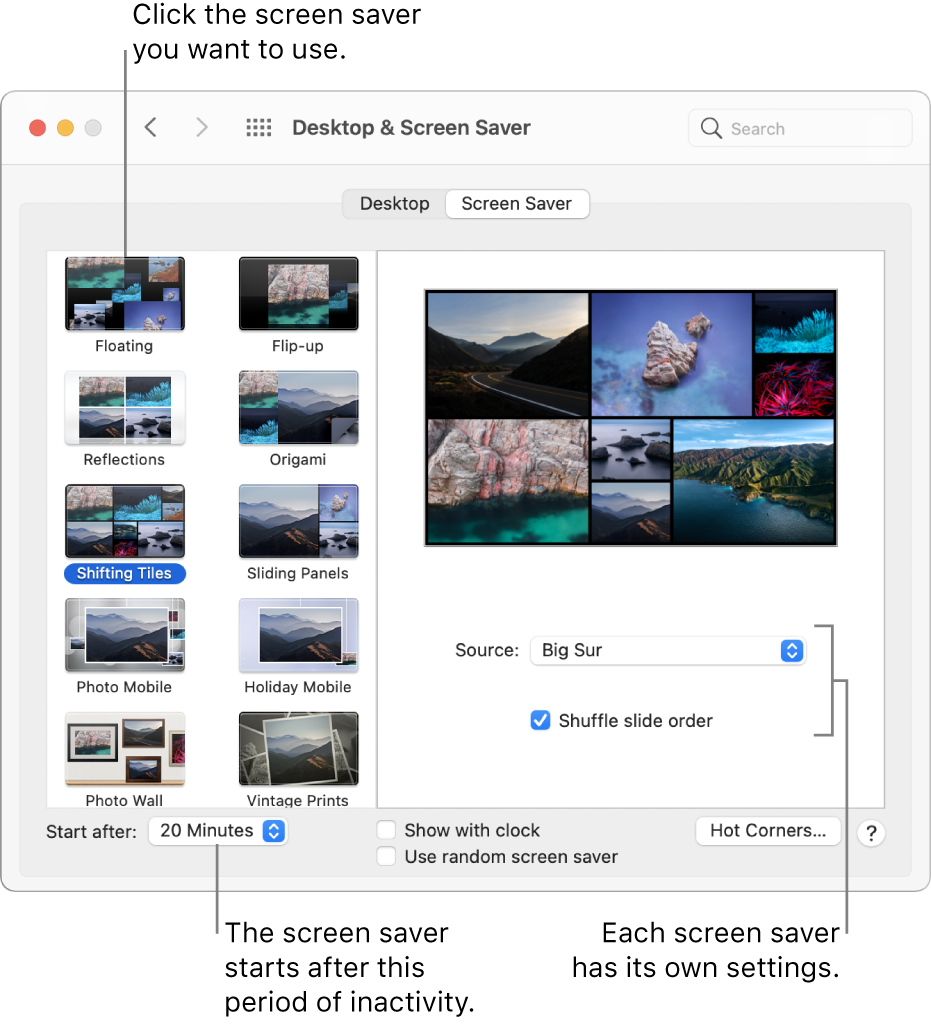Click the “Desktop & Screen Saver” icon; Click the Screen Saver tab; Select any screen saver in the column on the left. For instance, I scrolled to the bottom and selected the “Word of the Day” screensaver. Just beneath that area, click the “Start after” drop-down menu and select “1 Minute”. The Mac Photos app works well for most users, but occasionally a variety of hiccups can be encountered when interacting with photo libraries, ranging from crashes, to hanging on Photos app launch, a failed import, thumbnails missing from an image library, pictures missing from a library that was imported, or even a completely empty Photos app.
Own a wallpaper collection
Mac Screensaver Photo Library Missing Files
Since the introduction of macOS Mojave, Mac desktop backgrounds got quite a bit more lively and dynamic, adapting to the exact hour of the day. But even then, let’s face it, default Mac backgrounds are pretty boring. When everyone sports the same wallpaper as you, it comes across as a sign of laziness and conformity. Luckily, we can easily spice things up!
There are lots of options for you to choose as your background, from a set of default ones to anything customized. Here, we’ll explore how to change background on Mac quickly as well as touch on how to change screen saver, so you never get tired of looking at your Mac.
Craft a creative desktop space on Mac
Your Mac can look and perform just as you expect it to. Download Setapp and upgrade your creative routine with a curated toolkit of apps.
How To Change Wallpaper On Mac
If you simply want to switch away from the default Mac desktop wallpaper, you should first try one of the Apple backgrounds already pre-installed on your Mac.
Changing MacBook backgrounds is easy:
- Open System Preferences ➙ Desktop & Screen Saver
- Make sure you’re in the Desktop tab
- In the sidebar, open Apple ➙ Desktop Pictures
- Click on any of the pictures to set it as your background
Set custom Mac backgrounds effortlessly
To divert from Apple’s preselected style, Macs allow you to set any image of your choice as a Mac desktop wallpaper. Simply find the image anywhere on your Mac, right-click on it, and select Set Desktop Picture from the menu. In case your image is in the Photos app, open it up, click on the share icon, and choose the Set Desktop Picture option from there.
When choosing a custom background, check that it fits the desktop just right. If not, adjust the fit by selecting a dropdown and picking from either Fill Screen, Fit to Screen, Center, etc.
Rotate a collection of Mac desktop wallpapers
There’s also another way to add your own group of images, which gives you more flexibility in terms of setting them to automatically rotate later on:
- Go to System Preferences ➙ Desktop & Screen Saver
- Click on the plus sign in the bottom-left corner
- Navigate to the picture folder of your choice
- Click Choose to add the option to the Desktop menu
Now your folder should be visible in the sidebar of the Desktop & Screen Saver window. You can still just select one of the images out of the folder. But if you want the images to rotate:
- Check the box next to “Change picture”
- Set the frequency from the dropdown
Remove duplicates from your image folder
Most of the time, the image folder you set to be rotated is the one from your recent trip or maybe even a photoshoot. Hence it’s likely to contain lots of similar photos: the ones taken from the same angle of the same object. How do you get rid of them? Going through the whole folder yourself and deleting all near duplicates one by one is boring and time consuming. Instead, you should use an automatic solution.
Gemini is a lightweight but mighty duplicate finder utility for your Mac. Its AI-based algorithm not only finds the exact duplicates in any folder on your Mac, it also compares all the similar pictures and preselects the redundant options for a one-click removal. Don’t worry, Gemini makes it easy to restore any files that were wrongly deleted.
Before selecting your folder for Mac desktop wallpaper rotation:
- Open up Gemini
- Drop the folder right onto the app
- Click “Scan for Duplicates”
- Remove any similar photos that Gemini has found
Retouch all the images at once
Once you’re sure no duplicates or similar-looking images are left in your picture folder, you might want to adjust them in one way or another for a better look.
It could be that your images are of a different size than the MacBook Pro backgrounds, or you’ve been shooting in RAW format and need to convert images to .jpg, for example. Again, you probably already have a one-by-one workflow that does this, but is there a faster way?
PhotoBulk is a powerful image processing app that was designed to work specifically with batches of photos, editing dozens or hundreds at a time. It’s perfect for resizing, changing formats, renaming, compressing, and watermarking.
Using PhotoBulk is as straightforward as an editing app can be:
- In the app, add your picture folder using the plus icon in the bottom left
- Choose the modifications you’d like to do in the sidebar
- Adjust those edits and click Start
Now when you got rid of all the duplicates and made the necessary edits to your photos, you can add your photo folder to Desktop & Screen Saver and be sure it’ll look good there.
Rotate beautiful backgrounds automatically
Having your photos rotate as your MacBook backgrounds is great. But what if you don’t have any high-quality pictures around? Or just don’t want to spend any time setting something up?
Bring beauty to your Mac desktop
Download Wallpaper Wizard to rotate your custom desktop images on Mac. Get immersed in the creatives that were made just for you.
Wallpaper Wizard was created to rescue your Mac desktop wallpaper and bring beauty and inspiration to it. The automatic rotation function is already built in and you can choose from more than 35,000 high-quality royalty-free images to keep your collection ever-fresh.
Starting with Wallpaper Wizard is quite straightforward:
- Browse the app for the broad category you like, whether People or Vehicles
- Choose a specific set of images
- Click on the plus icon to add them to your Roll
You can also create your own Rolls by clicking on the plus icon of specific images. And if you just want one of the beautiful Mac desktop backgrounds from Wallpaper Wizard to be static, simply open it up and choose Set Desktop Picture.
Choose and install the best screensavers for Mac
Once you’ve decided what your MacBook backgrounds should be, you can similarly adjust your Mac screensaver too. You know that you have a screensaver on your Mac by default, right?
To see your current Mac screensaver, just go to System Preferences ➙ Desktop & Screen Saver and navigate to the Screen Saver tab. Your default screensaver would appear on the right. If you want to change it, you can simply explore all the options on the left and click on the one you like. Additionally, many screensavers would present customization options for further adjustments.
You might be wondering how to change screen saver to something custom. First, you need to find a suitable screen saver online and download it. The screen saver should have a .saver file extension. Then to install it, either double-click on the file or move the file to your Library ➙ Screen Savers folder. Now you should see the new screensaver in the Desktop & Screen Saver list.
Improve security with Hot Corners
Since you now have a perfect Mac screensaver in place, there’s one more thing you can modify to make your computer more secure overall.
Hot Corners is a great little feature that triggers a certain action when your cursor reaches one of the corners of your screen. What you want to do here is set a Hot Corner to lock your Mac and start a screensaver.
To set up Hot Corners:
- Go to System Preferences ➙ Desktop & Screen Saver
- In the Screen Saver tab, click Hot Corners in the bottom right
- Using a dropdown, set one of the corners to Start Screen Saver
- Navigate to System Preferences ➙ Security & Privacy
- Check the box to “Require password immediately after sleep or screen saver begins”
From now on, when you move your cursor to a given corner, your beautiful new screensaver will start and your Mac will lock. It’s strongly suggested to do this every time your step away from your computer to keep your data safe.

So set up a rotating Mac desktop wallpaper, whether it’s your personal archive, quickly processed with Gemini for duplicates and PhotoBulk for retouching, or Wallpaper Wizard with its gorgeous HD rolls of images. Then install one of many custom screensavers for Mac and configure Hot Corners to improve your laptop’s security.
Where Are Screensaver Pictures Stored On Mac
Best of all, you could use all the apps mentioned above free for a limited time through Setapp, a platform of more than 150 Mac apps that improve your daily workflow and ensure a beautiful user experience. Enjoy the view!
Your photos are your sweet memories you would like to see frequently. But if you tend to store those memories in the deep folders of your Mac, you would certainly forget those memories after some time. Better you should set Mac’s photos library as a screen saver.
This will keep your memories live as you will get to see those photos often on your Mac’s screen. You need to follow some easy steps to set your Mac’s Photos library as a screen saver.
Related: How to Install New Screensavers in Mac OS X
How to Set Photos Library As A Screen Saver on Your Mac:
Step #1: Click on Apple logo on your Mac.
Step #2: Open System Preferences.
Step #3: Now click on Desktop and Screen Saver preference. Gds to dxf converter.
Step #4: Click on Screen Saver tab.
Step #5: Choose your favorite screen saver from the left side panel.
On the right side of the dialog box, you will notice a drop-down menu next to Source.
Step #6: Click on the drop-down menu.
Step #7: You can either choose a recent photo event or select Photo Library.
Step #8: From this, you can select number of photos to use as a screen saver.
Please note that you can select Moment, Collection, Year, Face, Album or Shared iCloud album to use as screen saver. You can also choose individual photos as screen saver.
Step #9: Click the Shuffle Slide Order box to make screen saver auto change among the selected photos in random order.
Step #10: You can choose the time when the screen saver starts. Click the drop-down menu next to Start after and select the time ranges from one minute to one hour. In between, you can choose 2 minutes, 5 minutes, 10 minutes, 20 minutes, and 30 minutes.

Step #11: Finally, click the Preview button to view your screen saver.
Related: How to Use iCloud Photos as a Screensaver on Apple TV
There is more to this screen saver thing to discuss; we will come up with more information. Till then stay tuned to our social media channels Facebook, Twitter, and Google+. Share your feedback with us!